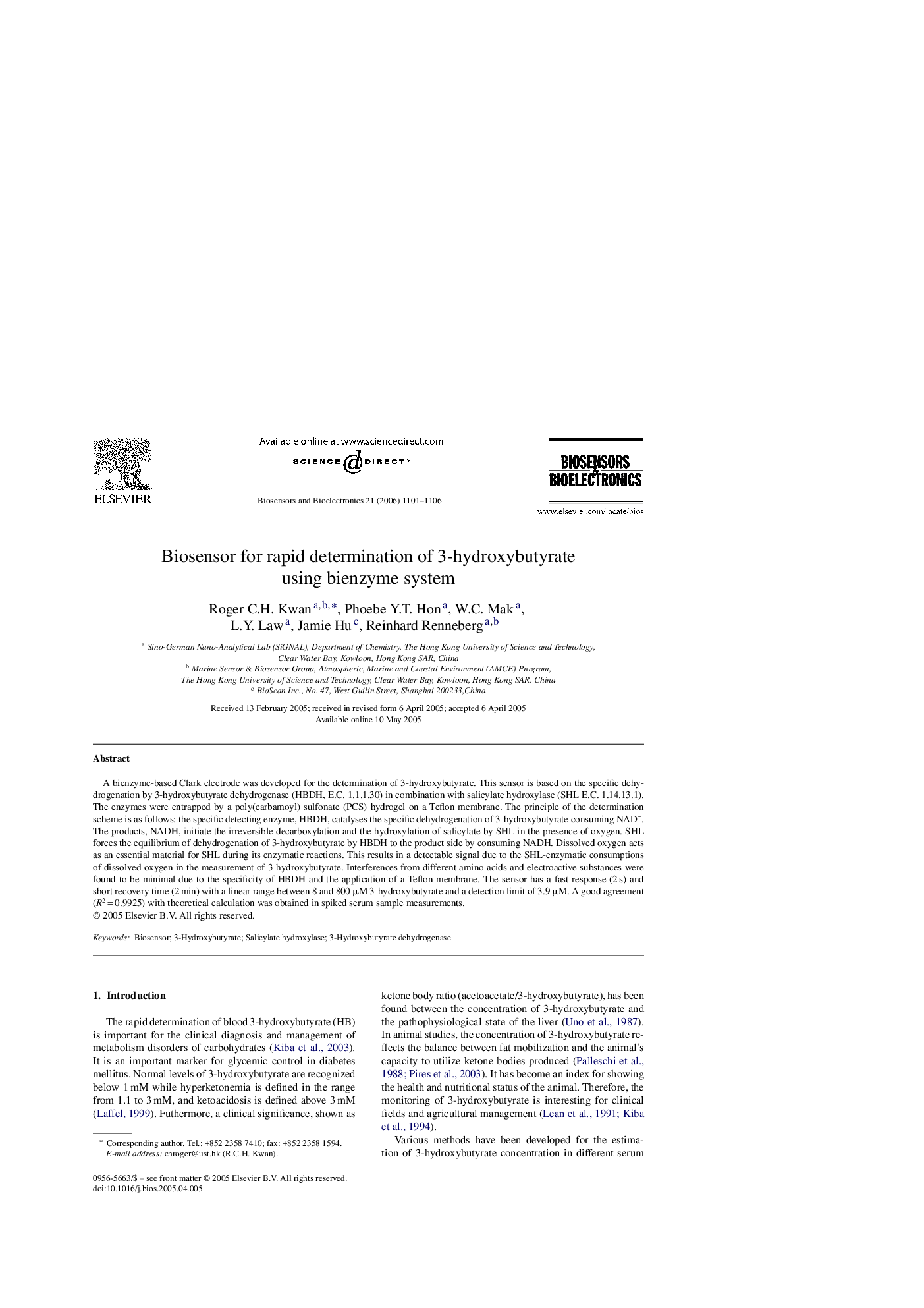| Article ID | Journal | Published Year | Pages | File Type |
|---|---|---|---|---|
| 870372 | Biosensors and Bioelectronics | 2006 | 6 Pages |
A bienzyme-based Clark electrode was developed for the determination of 3-hydroxybutyrate. This sensor is based on the specific dehydrogenation by 3-hydroxybutyrate dehydrogenase (HBDH, E.C. 1.1.1.30) in combination with salicylate hydroxylase (SHL E.C. 1.14.13.1). The enzymes were entrapped by a poly(carbamoyl) sulfonate (PCS) hydrogel on a Teflon membrane. The principle of the determination scheme is as follows: the specific detecting enzyme, HBDH, catalyses the specific dehydrogenation of 3-hydroxybutyrate consuming NAD+. The products, NADH, initiate the irreversible decarboxylation and the hydroxylation of salicylate by SHL in the presence of oxygen. SHL forces the equilibrium of dehydrogenation of 3-hydroxybutyrate by HBDH to the product side by consuming NADH. Dissolved oxygen acts as an essential material for SHL during its enzymatic reactions. This results in a detectable signal due to the SHL-enzymatic consumptions of dissolved oxygen in the measurement of 3-hydroxybutyrate. Interferences from different amino acids and electroactive substances were found to be minimal due to the specificity of HBDH and the application of a Teflon membrane. The sensor has a fast response (2 s) and short recovery time (2 min) with a linear range between 8 and 800 μM 3-hydroxybutyrate and a detection limit of 3.9 μM. A good agreement (R2 = 0.9925) with theoretical calculation was obtained in spiked serum sample measurements.
